Journal of Civil Engineering and Environmental Sciences
Modern essentials of architectural, Design and computation principles dictating the lighting of spaces
Ar Deepthi A1, Ar Antara Nandy2 and Utpal Kumar Nandy3*
2Executive Architect, BU Builders & Consultants Pvt. Ltd, Tarapith, WB, India
3Director, B.U. Builders & Consultants Pvt Ltd, India
Cite this as
Deepthi AA, Nandy AA, Nandy UK (2020) Modern essentials of architectural, Design and computation principles dictating the lighting of spaces. J Civil Eng Environ Sci 6(1): 003-010. DOI: 10.17352/2455-488X.000034Happiness brings good health and wellbeing. A properly lit space helps to bring in a sense of happiness. Nowadays, urban people in general rely on artificial lighting mostly even during daytime especially within office buildings. This research paper intents to discuss about responsibilities of a lighting designer, the effect of lighting on emotional well-being of the occupants and attainment of comfort from a lighting designer’s point of view. Offices, factories and public gathering spaces such as markets etcetera are given more emphasis in this research. The latest trends include day-lighting methodology, passive lighting, anti-glare lighting and lastly, from good health perspective, anti-bacterial LED lights.
Some of the significant psychological aspects discussed include mood betterment caused by artificial lighting, increasing hygiene through lighting and therapeutic effects of lighting. This paper features a few case studies where the scenes and corresponding lux values (using the software Dialux Evo and Dialux 4.13) have been charted along with the commentaries on comfort which have been achieved. Other notable Lighting design software include Autolux, Agi32, Luxicon, Lite Pro and Lumen micro.
Also, we intend to discuss basic Lighting Analysis techniques and Photoshop color correction techniques in separate individual sections.
Introduction
“Lighting ultimately is not about light, but about people. [u]nless you understand people, love people, are concerned about them and empathize with them, you’re not much more of value than a calculator” (Raymond Gernald, 2012).
An architectural lighting designer is consulted to figure out the technical factors and effects of lighting such as how much light is needed for maximum visual comfort. He/ She chooses lighting fixtures and positions them on electrical drawings and reflected ceiling plans (plans showing layout of ceiling).
Prominent Professional Lighting designers association include the International Association of Lighting designers (IALD) and Illuminating Engineering Society of North America (IESNA). These are two main bodies regulating and supporting lighting designers. An electrical engineer, civil engineer or architect can professionally work as an architectural lighting designer.
A lighting designer must be well aware about the characteristics of a light such as source of illumination, watts consumed, price, lamp’s life, extent of reach of light, area lit by it, daylight utilization, colour rendering index (the aspect ratio between how the light illuminates the object by how that object is seen in sunlight, termed CRI), colour, efficiency and warmth provided by the light (colour temperature). The designer must have command over computer based software for calculating the lux levels in a space.
Background research
Our aim has been achieved through background research on the optimum lux (unit for Intensity of Light) levels of brightness with assistance from Dialux Evo software. The Dialux Evo is a freeware which calculates the brightness achieved by a single or a group of luminaire in an indoor or outdoor scene or environment.
All residential spaces have to be fitted with warm white (golden yellowish white light) in order to provide maximum comfort for the occupants. Colors in relation to lighting can be categorized into three varieties namely, warm, neutral and cool white. We are conveying shortcuts a lighting designer utilizes to create mood enhancing warm white light.
Here in the Figure 1, CCT means Correlated Colour Temperature. Correlated Color Temperature refers to the Kelvin-based scale used to measure the color temperature of a luminaire (Correlated Color Temperature- Elemental LED, n.d.) [1]. In other words, CCT measures appearance of light source’s colour as defined by the proximity of its chromaticity co-ordinates against the standard blackbody locus. Here, chromaticity stands for the quality of light irrespective of its brightness [2].
The significant symbols representing manufacturers and distributors engaged in the development & commerce of lighting fixtures, lighting control and software are shown below:-
Cove lighting, Figure 2, is an indirect form of lighting that is made to pass and journey through recesses high up in the ceiling or on the walls of a room. It provides a uniform, linear or staggered arrangement.
Color temperature correction
Color temperature correction can be carried out with the help of the software, Photoshop as shown below, Figures 3,4
Case studies
In the chart given above, the method of calculation and deduction of luminous emittance has been provided Figures 5-9.
Computations & Results
In the chart given above, the method of calculation and deduction of luminous emittance has been provided Figures 10,11
- Correlated Color Temperature- Elemental LED. (n.d.).Link: http://bit.ly/2TwyrAc
- What is CCT. (n.d.). Link: http://bit.ly/2VKZ4Eq
Article Alerts
Subscribe to our articles alerts and stay tuned.
 This work is licensed under a Creative Commons Attribution 4.0 International License.
This work is licensed under a Creative Commons Attribution 4.0 International License.
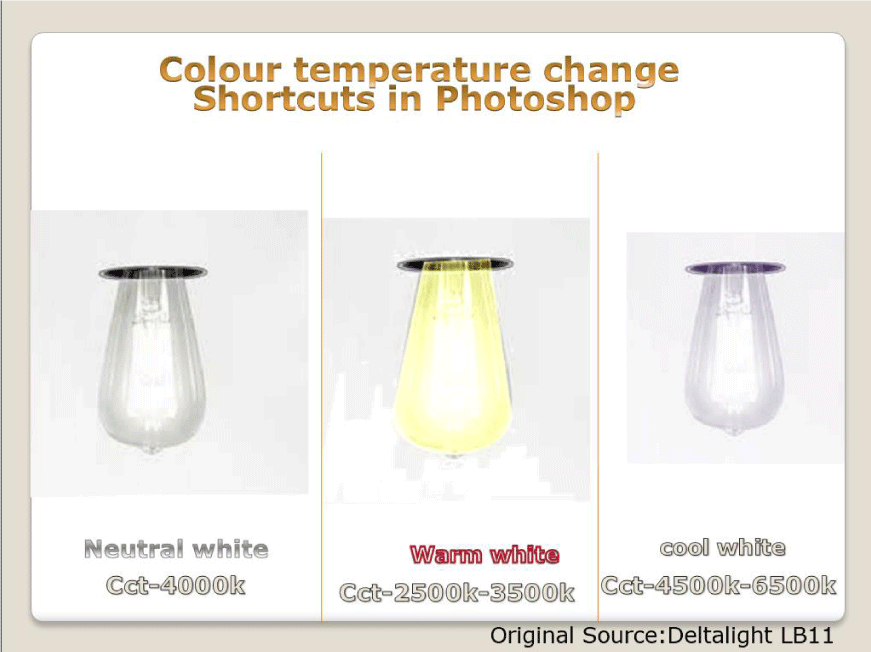

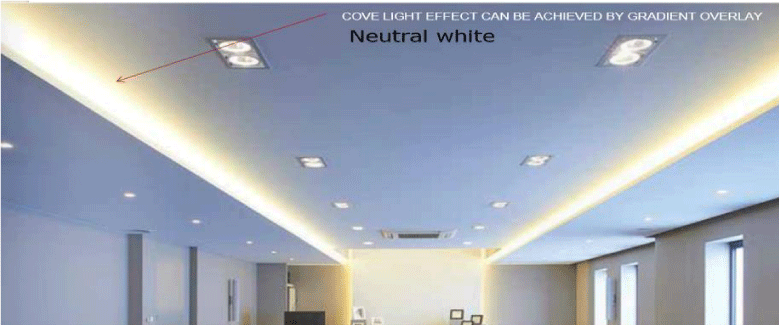
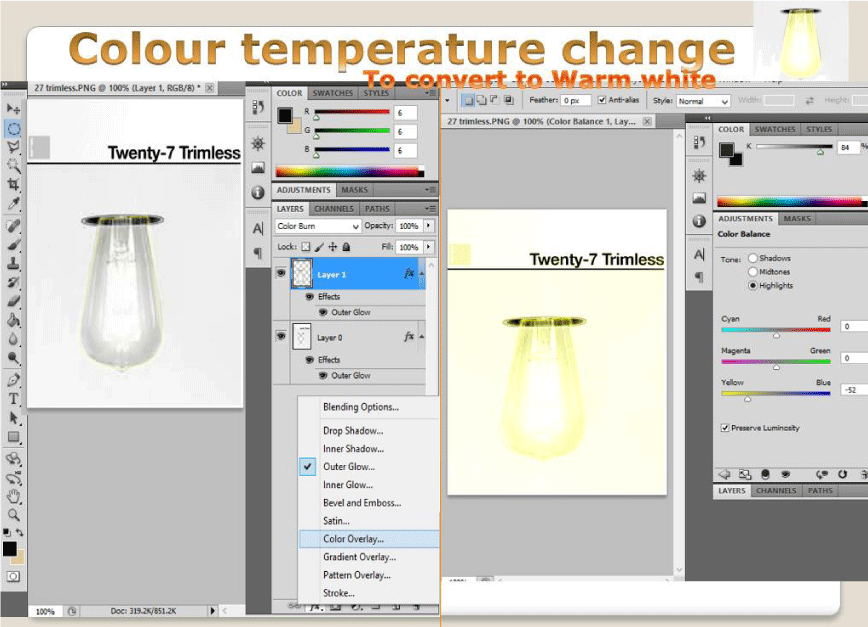
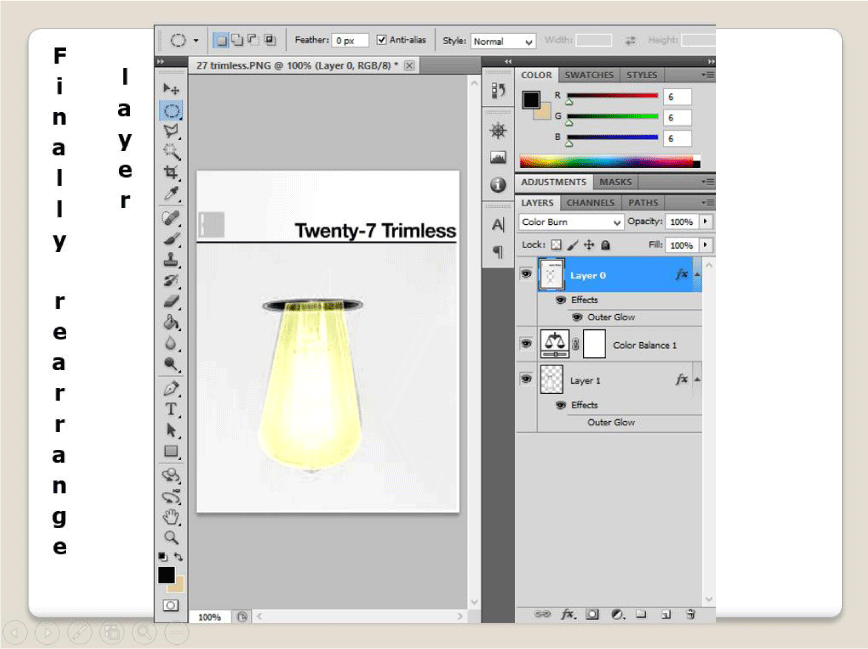
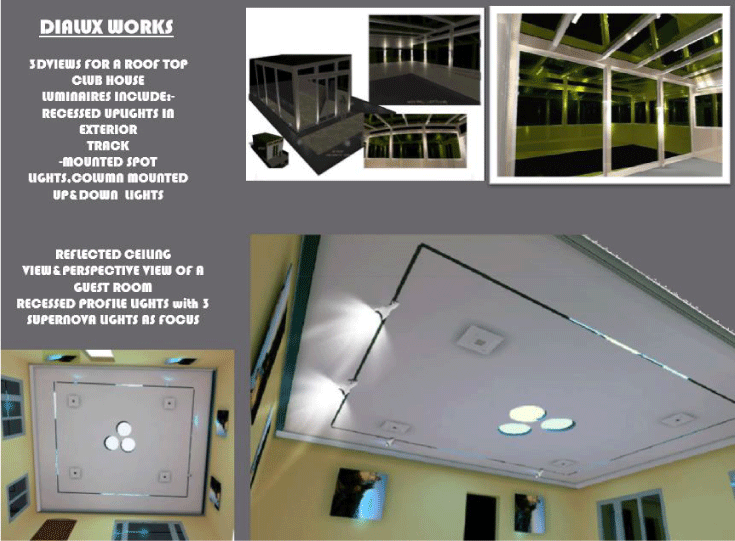
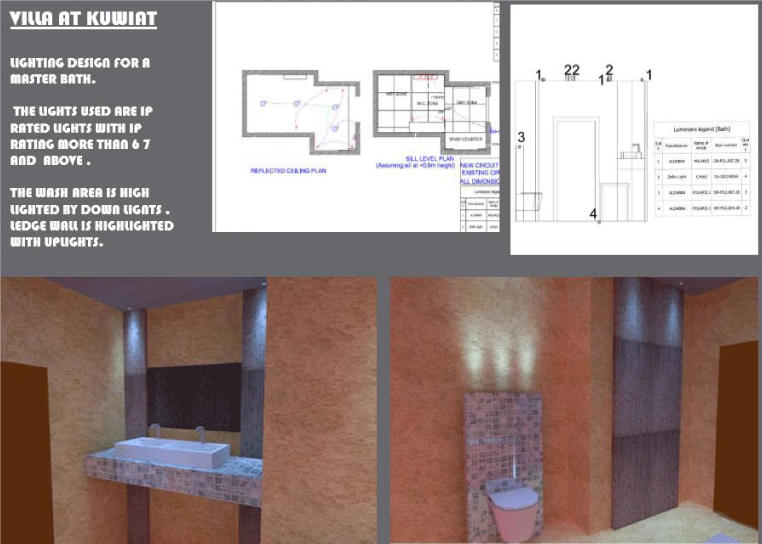
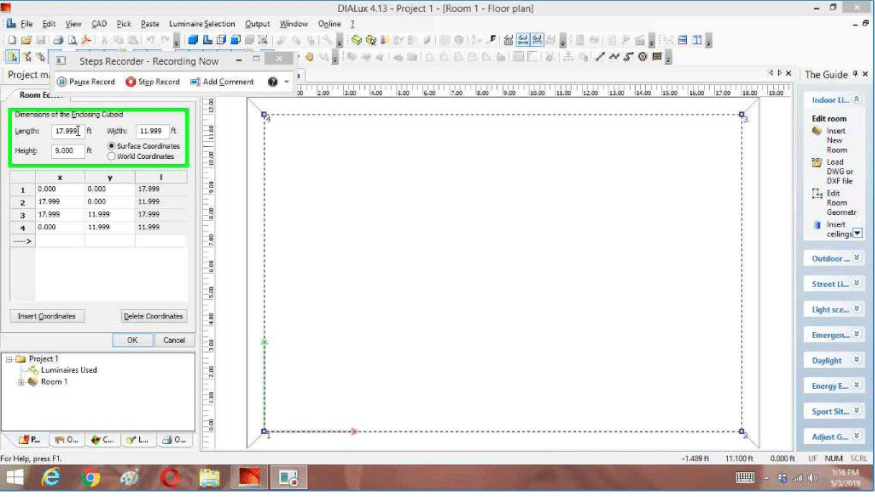


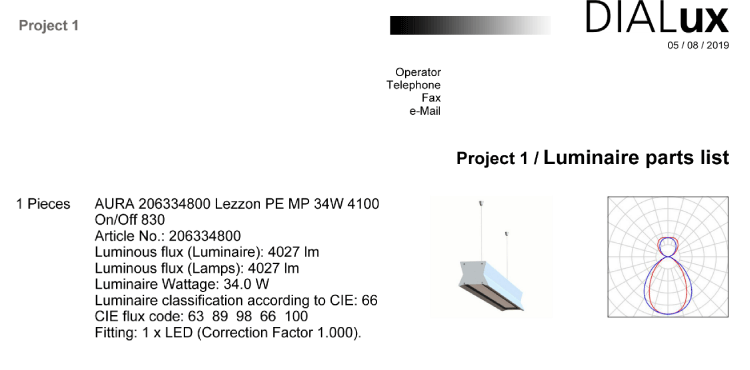
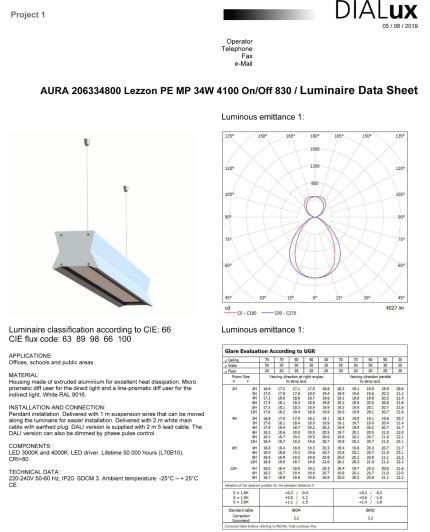



 Save to Mendeley
Save to Mendeley
